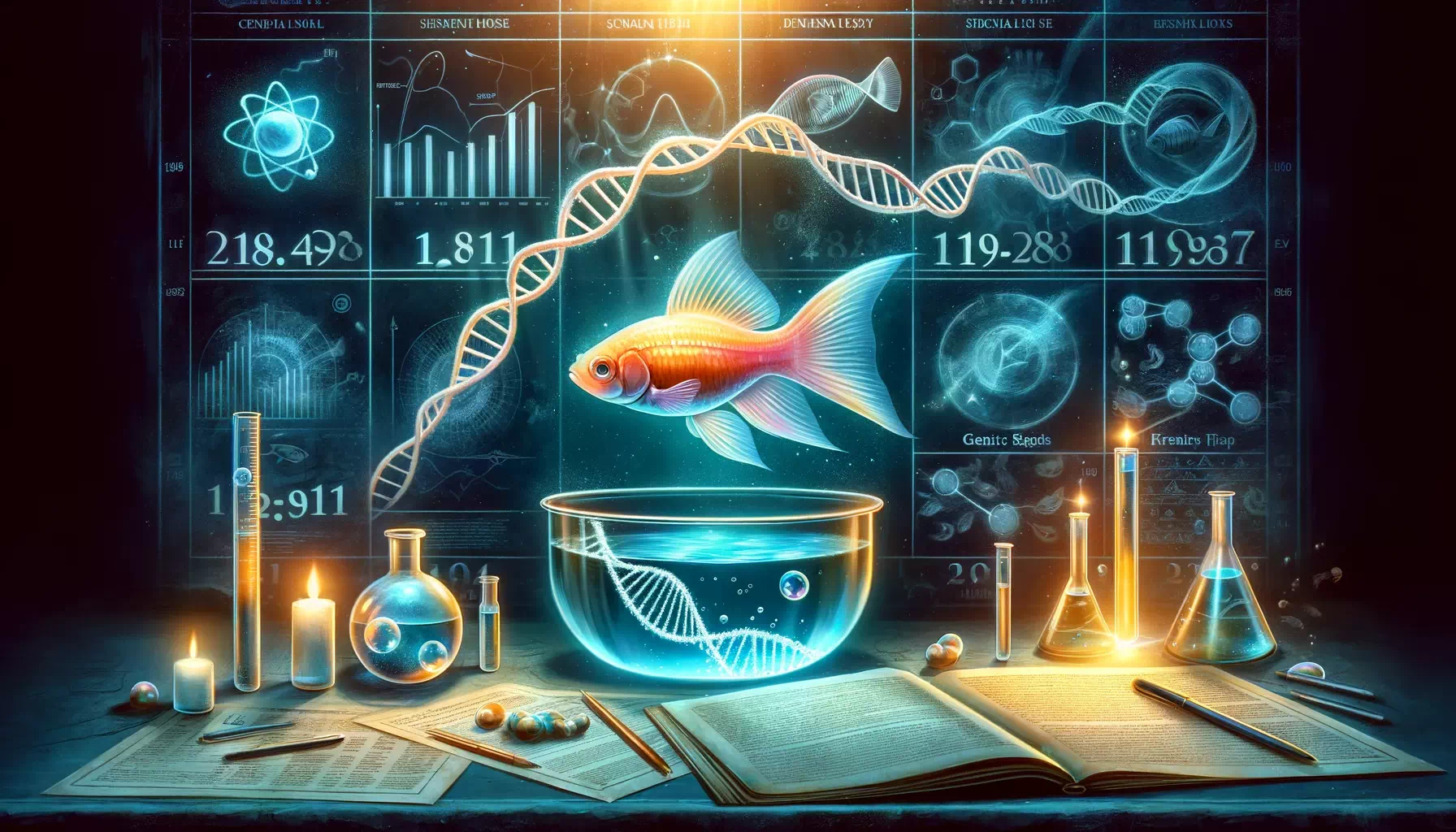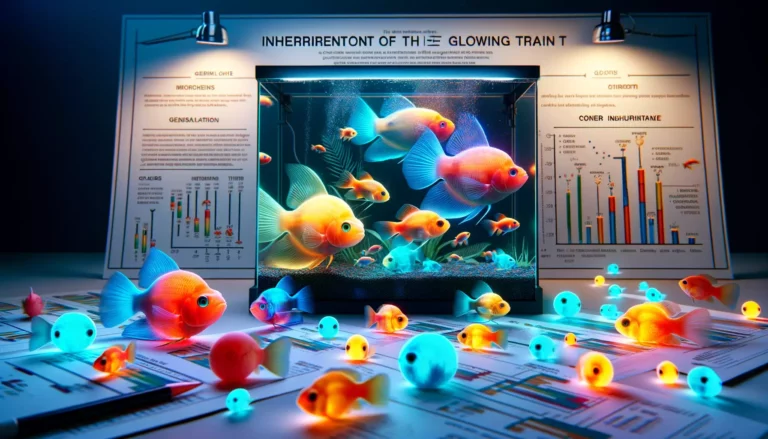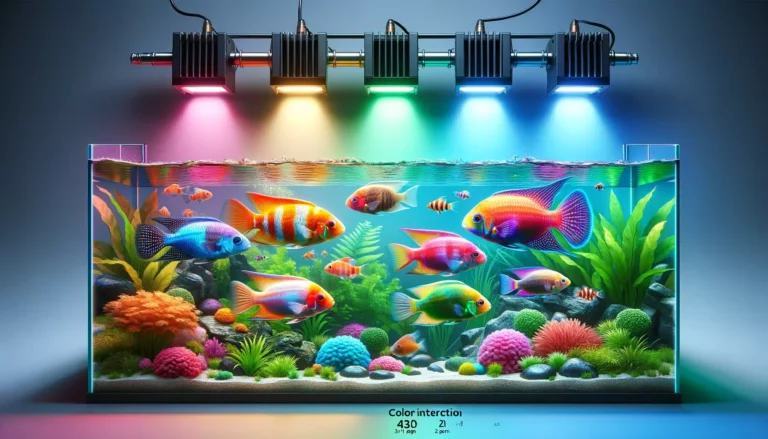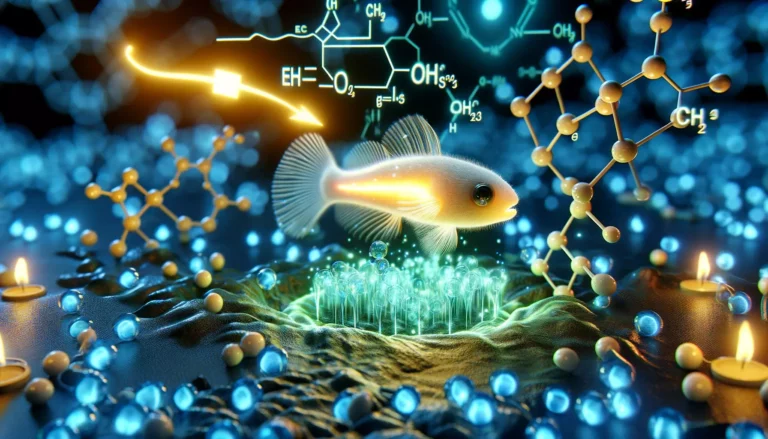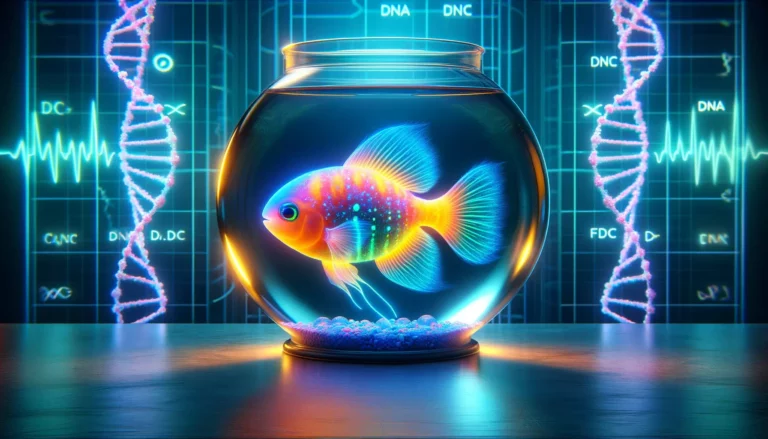The Creators and Origin Date of the First GloFish
The first GloFish saw a remarkable transformation through genetic engineering. Scientists introduced a new gene into zebrafish embryos. This gene, sourced from jellyfish, coded for Green Fluorescent Protein (GFP). When expressed, GFP made the fish glow under specific light conditions.
The process was complex yet fascinating. The GFP gene was inserted into the fish’s genome at an early developmental stage. This ensured the fluorescence appeared throughout the fish’s body. It also guaranteed the trait would pass on to offspring.
The modification did not harm the fish or alter their lifespan. It simply added the glowing trait. This was a major breakthrough in genetic engineering. It showed that specific traits could be added to organisms safely.
This innovation opened doors to new genetic possibilities. Scientists saw potential beyond just creating glowing fish. They envisioned applications in environmental monitoring and medical research.
The Base Species Used for the First GloFish

The first GloFish were based on a common species, the zebrafish. Zebrafish are small freshwater fish, native to South Asia. They are well-known in scientific research. Their transparent embryos make them ideal for genetic studies.
Zebrafish share many genes with humans. This makes them valuable for medical research. Scientists use them to study human diseases. They also explore genetic functions and developmental processes.
Choosing zebrafish for GloFish creation was strategic. Their genetic similarity to humans was important. Their well-understood genetics made them suitable for modification.
The use of zebrafish marked a significant choice. It bridged the gap between scientific research and commercial application. GloFish became not just a pet novelty. They also served as models for genetic research.
The Initial Purpose of Creating GloFish
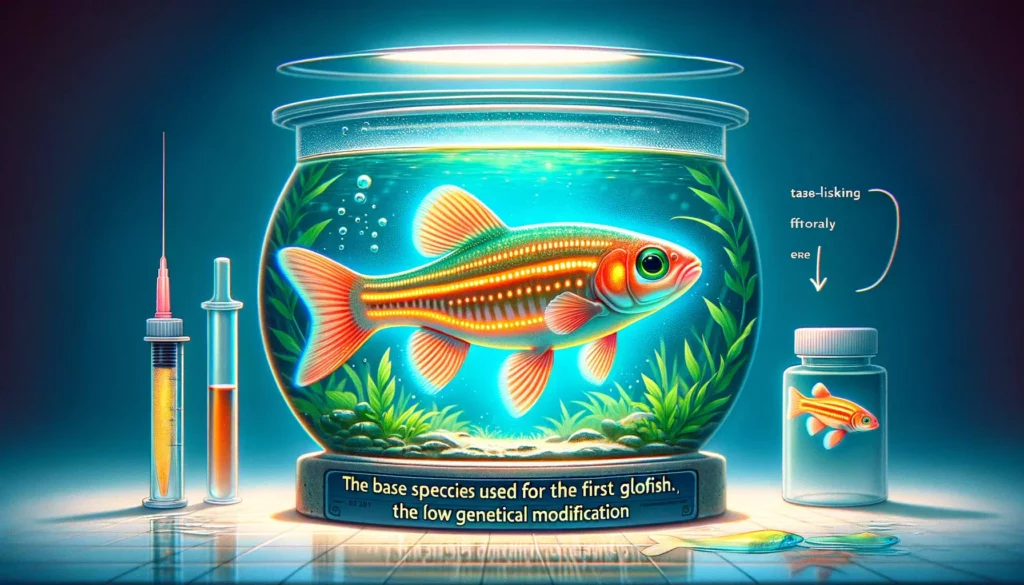
GloFish were originally created for environmental monitoring. The aim was to develop a fish that could detect pollutants in water. If the water was contaminated, the fish would glow. This would serve as a clear and immediate indicator of water quality issues.
Scientists at the National University of Singapore spearheaded this project. They focused on creating a bio-indicator for environmental toxins. Their approach was innovative. They used genetic engineering to create a living sensor.
The purpose was not initially to create an ornamental fish. The glowing trait was a means to an environmental end. It was meant to help in the fight against pollution. The idea was that GloFish could provide an early warning system for contaminated water.
Over time, the purpose of GloFish shifted. They moved from scientific tools to commercial pets. This transition raised various ethical and environmental questions. But it also popularized the concept of genetic modification in everyday life.
Integration of Fluorescent Proteins from Jellyfish into GloFish
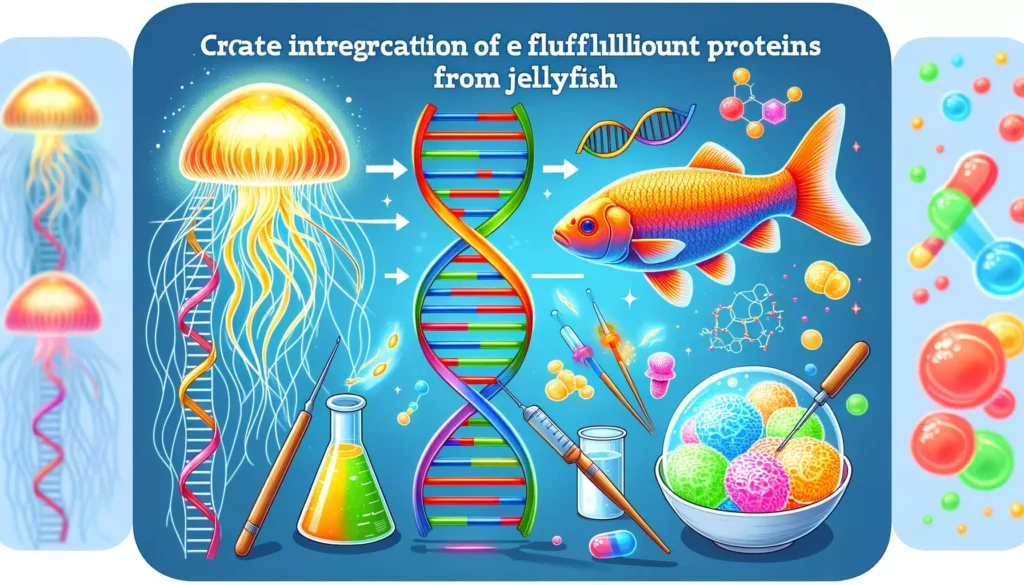
The integration of fluorescent proteins into GloFish was a scientific feat. It involved transferring genes from jellyfish into zebrafish. The gene responsible for producing Green Fluorescent Protein (GFP) was used. GFP is what makes jellyfish glow.
The process started with the extraction of the GFP gene. This gene was then inserted into the zebrafish embryos. Microinjection was the method used. It involves injecting the gene directly into the fish’s cells at an early developmental stage.
This integration was a delicate and precise operation. It required skilled handling and advanced technology. Once the GFP gene was integrated, it became part of the fish’s DNA.
The result was a zebrafish with the ability to glow green under ultraviolet light. The success of this integration was a milestone in genetic engineering. It demonstrated that genes from different species could be combined. This opened up new possibilities in biotechnology and genetic research.
Initial Public Reactions and Responses to GloFish
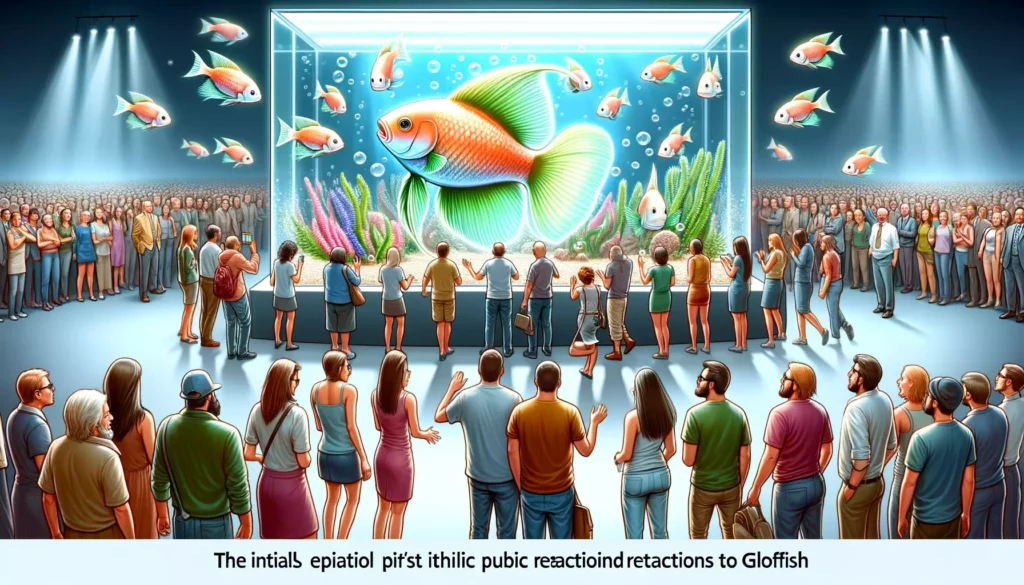
The introduction of GloFish to the public was met with mixed reactions. On one side, there was fascination and excitement. The vibrant colors and unique appearance of GloFish captivated many. They were seen as a novelty in the pet fish market. People were intrigued by the idea of genetically modified pets.
However, there was also significant concern and skepticism. Environmentalists and ethicists raised questions. They worried about the implications of releasing genetically modified organisms into the wild. There were fears about potential ecological impacts.
The ethical considerations of genetic modification were a major concern. Was it right to modify animals for aesthetic purposes? This debate extended beyond GloFish to the broader field of genetic engineering. Consumer safety was another issue. People questioned if these fish were safe to keep in home aquariums.
Despite the controversies, GloFish gained popularity. They brought attention to the possibilities and challenges of genetic engineering. They also sparked a wider public interest in science and technology.
Evolution of Design and Variety in GloFish Since Their Inception
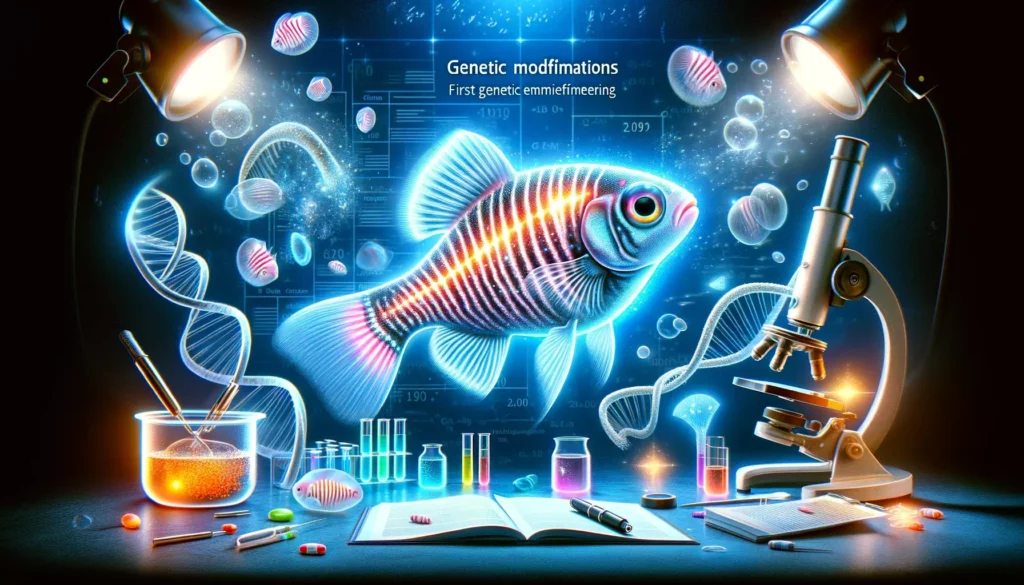
Since their inception, GloFish have undergone significant evolution in design and variety. The original GloFish were only available in one color – green. This was due to the use of the Green Fluorescent Protein (GFP) from jellyfish.
As genetic engineering techniques advanced, more colors were introduced. Scientists began using proteins from other organisms. This included corals and sea anemones. It resulted in GloFish in red, orange, blue, and purple.
The variety of GloFish expanded beyond zebrafish. Other species were genetically modified to glow. These included tetras and barbs. Each species offered unique characteristics and colors.
The evolution of GloFish reflects advancements in genetic engineering. It demonstrates the increasing ability to manipulate genetic traits. The variety of GloFish available today is a testament to this progress. It also shows the commercial success and public acceptance of genetically modified pets.

